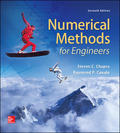
Concept explainers
Although we did not mention it in Sec. 8.2, Eq.
In other words, the positive charges must equal the negative charges. Thus, when you compute the pH of a natural water body such as a lake, you must also account for other ions that may be present. For the case where these ions originate from nonreactive salts, the net negative minus positive charges due to these ions are lumped together in a quantity called alkalinity, and the equation is reformulated as
where
Want to see the full answer?
Check out a sample textbook solution
Chapter 8 Solutions
EBK NUMERICAL METHODS FOR ENGINEERS
Additional Engineering Textbook Solutions
Pathways To Math Literacy (looseleaf)
Elementary and Intermediate Algebra: Concepts and Applications (7th Edition)
Thinking Mathematically (6th Edition)
Precalculus: A Unit Circle Approach (3rd Edition)
College Algebra Essentials (5th Edition)
APPLIED STAT.IN BUS.+ECONOMICS
- 2. Consider the ODE u' = ƒ (u) = u² + r where r is a parameter that can take the values r = −1, −0.5, -0.1, 0.1. For each value of r: (a) Sketch ƒ(u) = u² + r and determine the equilibrium points. (b) Draw the phase line. (d) Determine the stability of the equilibrium points. (d) Plot the direction field and some sample solutions,i.e., u(t) (e) Describe how location of the equilibrium points and their stability change as you increase the parameter r. (f) Using the matlab program phaseline.m generate a solution for each value of r and the initial condition u(0) = 0.9. Print and turn in your result for r = −1. Do not forget to add a figure caption. (g) In the matlab program phaseline.m set the initial condition to u(0) = 1.1 and simulate the ode over the time interval t = [0, 10] for different values of r. What happens? Why? You do not need to turn in a plot for (g), just describe what happens.arrow_forwardTrue or False and whyarrow_forward10 5 Obtain by multiplying matrices the composite coordinate transformation of two transformations, first x' = (x + y√√2+2)/2 y' = z' (x√√2-2√2)/2 z = (-x+y√√2-2)/2 followed by x" = (x'√√2+z'√√2)/2 y" = (-x'y'√√2+2')/2 z" = (x'y'√√2-2')/2.arrow_forward
- Not use ai pleasearrow_forward4 The plane 2x+3y+ 6z = 6 intersects the coordinate axes at P, Q, and R, forming a triangle. Draw a figure and identify the three points on it. Also find vectors PQ and PR. Write a vector formula for the area of the triangle PQR and find its value.arrow_forwardAND B A Ꭰarrow_forward
- I just need b,c,darrow_forward8. In the following check to see if the set S is a vector subspace of the corresponding Rn. If it is not, explain why not. If it is, then find a basis and the dimension. X1 (a) S = X2 {[2], n ≤ n } c X1 X2 CR² X1 (b) S X2 = X3 X4 x1 + x2 x3 = 0arrow_forward5 Obtain by multiplying matrices the composite coordinate transformation of two transformations, first x' = (x + y√2+ z)/2 followed by y' = (x√√2-2√2)/2 z' = (-x+y√2-2)/2 x" = y" 2" = (x'√√2+2'√√2)/2 (-x'y'√√2+)/2 (x'y' √√2-z)/2.arrow_forward
- Algebra & Trigonometry with Analytic GeometryAlgebraISBN:9781133382119Author:SwokowskiPublisher:Cengage
 Linear Algebra: A Modern IntroductionAlgebraISBN:9781285463247Author:David PoolePublisher:Cengage Learning
Linear Algebra: A Modern IntroductionAlgebraISBN:9781285463247Author:David PoolePublisher:Cengage Learning


